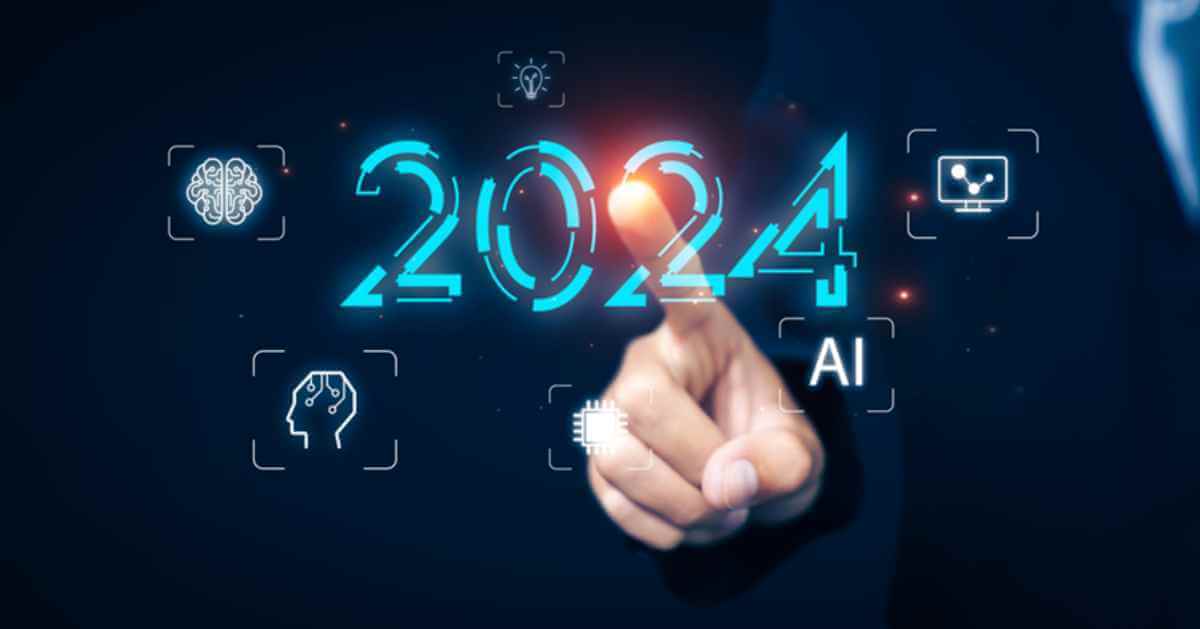Technological Predictions Expected to Materialize in 2024

In today’s day and age, technology is changing at a rapid pace, transforming our daily lives one ground-breaking discovery at a time. Whether it’s impacting our jobs, school systems, or even healthcare, it’s important to stay up-to-date with the latest innovations so you can remain informed and prepare for what’s to come.
Thank you for reading this post, don't forget to subscribe!Unsurprisingly, the sphere of online gambling will be yet another area which will greatly benefit from such technological upgrades and advancements. In fact many of the leading mobile online casinos and apps have implemented some of the most cutting edge updates to ensure the best possible gameplay.
Let’s take a look at the latest upcoming technological trends and the future that awaits us.
AR Glasses
In 2024, we can expect to see the growing adoption of augmented reality glasses, made possible by the launch of the Apple Vision Pro. The headset promises to seamlessly bridge the physical and digital worlds, changing how we connect, interact, and consume information. Although their appearance has spawned a few memes drawing comparisons to ski goggles, the Apple Vision Pro is more than what you see; it’s about how you approach the world with the digital enhancement.
Unlike virtual reality glasses, AR glasses are not designed to shut out the outside world but to allow individuals to live in the moment while simultaneously enjoying a virtual experience. However, pricing will definitely be a determining factor when it comes to seeing whether AR glasses will be a commercial success.
Owning a Vision Pro does not come cheap; the revolutionary device holds a steep price tag, clocking in at $3,499. That’s roughly the same price as six 32-inch Samsung Frame TVs. While the quality of the Vision Pro is expected to be superior, it remains to be seen if AR glasses will truly change the way we interact with our digital devices.
C-V2X
Have you ever wondered what it would be like if your car could talk to other vehicles, pedestrians, and even city infrastructure? Cellular Vehicle-to-Everything technology, or C-V2X, promises this and so much more. This new technology will not only allow your car to interact with its surroundings, such as other vehicles, pedestrians, and mobile networks, but it will also come equipped with a higher level of predictability for enhanced road safety.
C-V2X will revolutionise transportation as we know it today, making it safer, smarter, and simpler. We can also expect the introduction of this technology to play a massive role in reducing traffic congestion and pollution due to its ability to assess traffic conditions and correctly suggest optimal alternative routes. This will greatly benefit first responders by ensuring they have priority for the entire route. Additionally, C-V2X can also help drivers register when an emergency vehicle is nearby by using a warning system so that the driver can prepare to make way for the first responder.
The act of parking is yet another area that will be completely transformed by C-V2X. If the parking lot is designed for vehicle-to-vehicle communication, then the spot can come equipped with a sensor that can track how long the car has been in the parking spot and how much it should be charged. It could then relay billing information and process payments automatically, which would streamline the process, making it faster and more efficient.
Artificial Muscles
While a robot invasion may not be in the cards just yet, in 2024 we can expect to see some incredible advancements in robot technology, mainly with regards to the development of artificial muscles. Inspired by the versatility and efficiency of human muscles, their artificial counterparts will offer a multitude of game-changing opportunities, allowing them to perform more physically demanding tasks much more efficiently. As this technology progresses and becomes more readily available, it has the potential to revolutionise industries such as healthcare, logistics, and, of course, manufacturing, reshaping our future in remarkable ways.
This is not the first time we have seen robots implemented in industries. Undoubtedly, the COVID-19 pandemic and the accompanying labour shortage spearheaded the demand for automation, causing businesses like the American fast food giant White Castle to opt for hamburger-cooking robots to reduce human contact during the food cooking process. Additionally, a UK-based startup called Small Robot Company created two robots capable of killing weeds in wheat fields while also reducing the amount of chemical pesticides used. Amazon also famously makes use of around 200,000 of these robots at its distribution centres worldwide.
As with all new technological advancements, artificial muscles are bound to stir up some critical questions about safety, regulations, and the impact they could have on the job market in general. What’s important to remember, however, is that fearmongering is never the answer. It is essential that these concerns get addressed to help people embrace the new technology rather than fear it, seeing it as a vehicle of endless opportunities.
